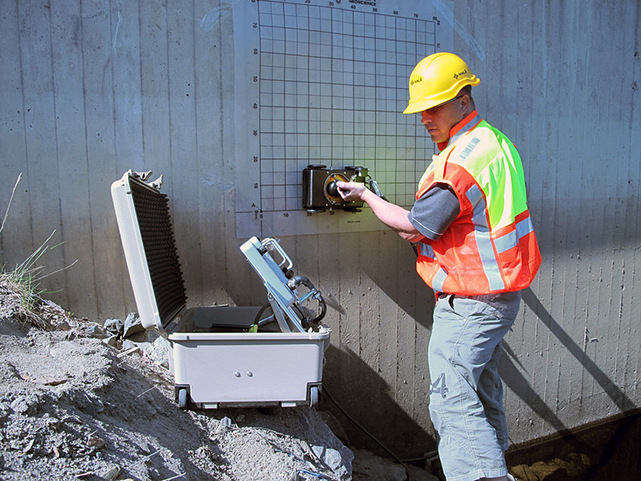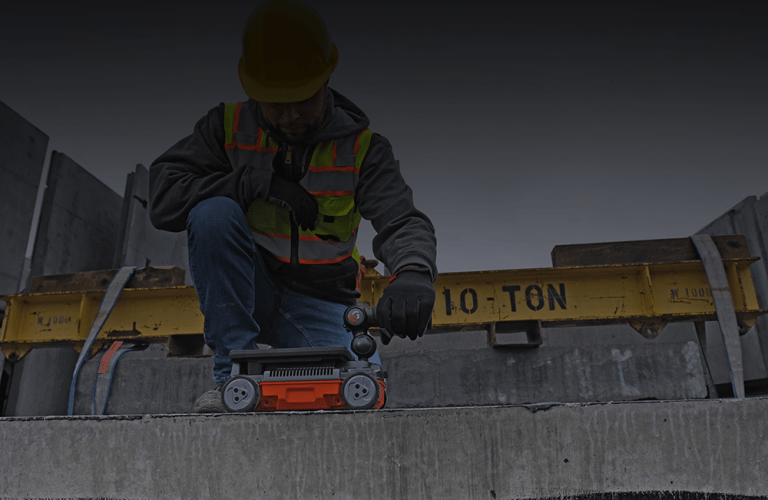RainierGPR Service Areas: Comprehensive Insurance Coverage for Concrete Scanning
RainierGPR Service Areas: Comprehensive Insurance Coverage for Concrete Scanning
Blog Article
Concrete Scanning: A Critical Action In The Direction Of Ensuring Structural Stability and Safety
In the realm of building and construction and facilities maintenance, the value of concrete scanning can not be overemphasized. By using sophisticated innovation and methods, concrete scanning serves as a critical tool in making sure that the honesty and safety and security of bridges and buildings are maintained to the highest standards.
Significance of Concrete Scanning
Concrete scanning plays a crucial duty in guaranteeing the structural stability and safety of buildings and infrastructure jobs. By using innovative modern technologies such as ground-penetrating radar (GPR) and electro-magnetic induction, experts can non-destructively check concrete structures to identify prospective flaws, voids, ingrained items, and reinforcement format. This procedure enables very early detection of abnormalities that can compromise the stability of a framework, protecting against pricey damages and guaranteeing the safety and security of occupants.
Concrete scanning is specifically crucial during the planning and building phases of a project. Prior to boring, cutting, or coring into concrete, scanning aids recognize the precise areas of rebar, post-tension cables, and various other embedded elements, minimizing the threat of accidental hits that might cause architectural weak points. In addition, concrete scanning help in quality control by verifying the density of concrete covers and identifying any inconsistencies that may affect the total durability of the framework. Eventually, investing in concrete scanning solutions is not only a proactive step to reduce threats but additionally a fundamental step towards preserving the lasting safety and security of structures and infrastructure.
Technology for Concrete Evaluation

Benefits of Very Early Discovery
Prompt discovery of architectural problems can dramatically mitigate risks and make certain the longevity of building and construction tasks. By identifying potential problems early in the building and construction procedure, stakeholders can take aggressive actions to resolve concerns prior to they intensify right into bigger and much more pricey issues. One of the key advantages of very early discovery is the prevention of architectural failures, which can pose severe security risks and bring about job delays and economic losses.
Furthermore, early detection permits for prompt repair services and upkeep, which can assist expand the life expectancy of the structure. By attending to issues promptly, building and construction teams can prevent expensive repair work or perhaps the need for early substitute of structural components. This proactive method not just conserves time and money see page yet also improves the total security and longevity of the construction task.
Additionally, very early discovery can enhance job preparation and decision-making by offering stakeholders with important understandings right into the problem of the structure. Armed with this info, task supervisors can make informed options pertaining to construction approaches, products, and timelines, causing more successful and reliable project results.
Guaranteeing Architectural Stability
Ensuring the structural security of a building and construction task is paramount to its safety and security and durability. Concrete scanning plays a vital function in ensuring architectural security by identifying possible issues such as voids, delamination, or support deterioration that might jeopardize the integrity of the structure over time.
By utilizing advanced scanning modern technologies like ground-penetrating radar (GPR) and electro-magnetic induction, building and construction professionals can non-invasively evaluate concrete structures to identify areas of concern under the surface area. This aggressive method allows for the very early discovery of weak points or problems, making it possible for timely repair services or reinforcement to avoid architectural failures.
Normal concrete scanning during different construction stages and throughout the go to this site life cycle of a framework can assist maintain its security, reduce threats, and ensure the security of owners. By prioritizing architectural stability via concrete scanning, building tasks can enhance their durability and sturdiness, inevitably adding to higher safety and security and longevity.
Protecting Against Important Failings
Executing regular inspections, such as concrete scanning, can disclose covert problems like spaces, fractures, or corrosion that might endanger the integrity of a framework. By utilizing advanced scanning innovations like Ground Passing through Radar (GPR) or Concrete X-ray, engineers can non-destructively examine the problem of concrete and identify weak factors that require support or repair work.

Conclusion
In conclusion, concrete scanning plays a critical role in making certain structural stability and safety by making use of innovative technology for very early discovery of potential concerns. This proactive approach assists prevent essential failures and guarantees the stability of frameworks. It is important to focus on concrete examination as a conventional practice to safeguard the longevity and safety of buildings and facilities.
Concrete scanning plays a crucial function in ensuring the structural honesty and safety and security of buildings and infrastructure tasks. Furthermore, concrete scanning aids in high quality control by verifying the more info here density of concrete covers and spotting any discrepancies that may influence the total durability of the structure. Concrete scanning plays an important duty in making sure architectural security by discovering prospective problems such as voids, delamination, or support rust that might jeopardize the integrity of the framework over time.

In final thought, concrete scanning plays a crucial role in making certain architectural integrity and safety and security by using advanced technology for early discovery of potential problems.
Report this page